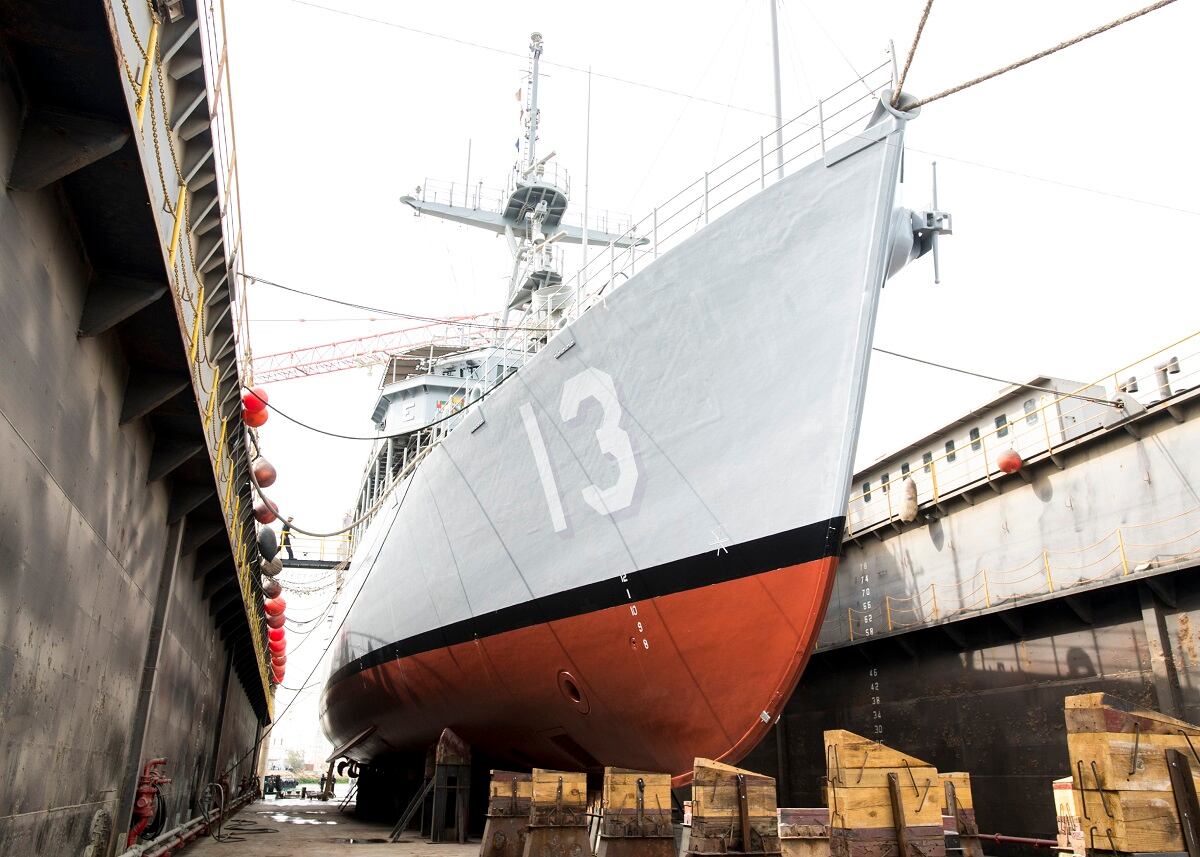Cuts to new ships, aircraft, maintenance and much-needed public shipyard modernization are on deck if Congress can’t come to an agreement to avert across-the-board cuts to the defense budget by January of 2020, according to a document submitted to lawmakers Dec. 12.
The document, used by Navy Secretary Richard Spencer at a recent Senate Armed Services readiness subcommittee hearing, shows the potential impact of cuts on various states and congressional districts. And while most of the line items are vague about specific cuts, there are some troubling indications about where the Navy could be looking to take risks, and it’s familiar story.
Renovations to naval shipyards could be deferred, part of the 20-year, $21 billion plan to modernize the public shipyards, the document reads. Furthermore, the Navy is eyeing cuts to ship maintenance availabilities, a move that tends to have a cascading effect, creating delays and degrading the material condition of ships on the waterfront for years into the future.
RELATED

The Navy is also threatening furloughs and hiring freezes at the public yards, which likewise creates delays and impacts for the maintenance and general readiness of the fleet, which under ideal conditions is challenged to maintain because of the breakneck pace of operations and difficulty keeping maintenance schedules.
At the hearing, Vice Chief of Naval Operations Adm. Bill Moran acknowledged that not just one but three of the Navy’s attack submarines has been decertified for dives while awaiting needed maintenance, which prompted a testy exchange with South Dakota Republican Sen. Mike Rounds over how forthright the Navy has been about its needs and how it’s using its increasing resources.
The delays are caused by the Navy’s prioritizing maintenance and modernization of the Ohio-class ballistic missile submarines, and have been exacerbated by furloughs and work stoppages due to cuts, retirements of aging skilled workers, degraded infrastructure at the public shipyards where nuclear maintenance is conducted, according to previous public statements by Navy leaders.
The document also cited cuts to shipbuilding, weapons and aircraft procurement were all in the cards for a 2020 sequester cut, but was short on specifics. It also mentions cutting the 2020 season of the Blue Angles flight demonstration team.
Moran and Spencer both said that a return to sequester would do damage that would take at least another five years to recover from.
“If we were to go back to those levels again, even though we would probably start to recover, you're talking five years, if you just use the recent last five years as an example,” Moran said.
“The component of time is time you can't get back,” Moran said. “So we lose proficiency, we lose expertise, and we have to recover that by skipping generations of people who miss the opportunity during the time when we didn't have the resources available.”
The Navy would not comment directly on any individual cuts planned for 2020 in case of automatic cuts, which Spencer said would be about a $26 billion cut across the Department of the Navy.
“[Program Objective Memorandum-20] POM-20 is currently in progress and we will not comment on pre-decisional budgetary matters," said Navy spokesperson Lt. Lauren Chatmas. "What I can tell you is that anything you may have seen about POM-20 are just options as we strive to find the best balance to support the defense strategy while also being responsible stewards of taxpayer dollars. This is what the POM process is for — to review all accounts in determining the best balance of investments.”

But indications that the Navy would go after maintenance and shipyard modernization are ominous omens for a fleet that has already seen a healthy amount of neglect in the face of mounting tasking. Because even though the sequestration cuts are across-the-board (even overseas contingency operations funding is affected by the cuts), in 2013 when DoD was hit with sequester Congress gave the services the ability to make decisions about where it was going to take the most risk, said Todd Harrison, a budget analyst with the Center for Strategic and International Studies.
“In 2013, they made the cut but then went back and gave the military huge reprogramming authorities,” Harrison said.
That means that even if the Navy must take a major cut, it’s likely that congress would then hand them the scalpel to do the surgery themselves, if history holds true.
Still, Harrison isn’t betting that the sequester cuts happen. Congress will likely cruise into 2020 under a continuing resolution that holds the budget at 2019 levels and then cut a deal at the last minute, he said.
“It will be close, it will look like we won’t get a deal; and then, at the last moment, Congress will make a deal,” Harrison said.
David B. Larter was the naval warfare reporter for Defense News.








